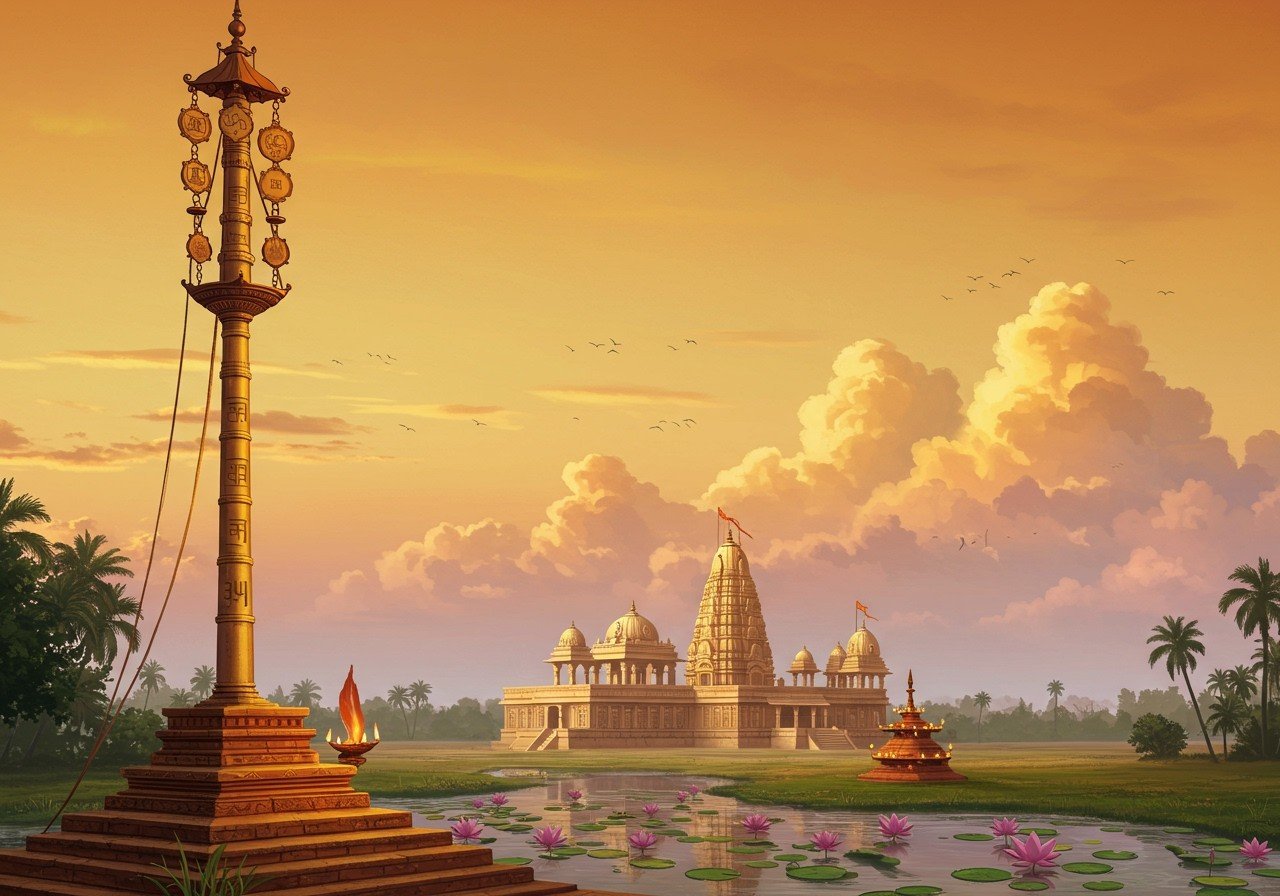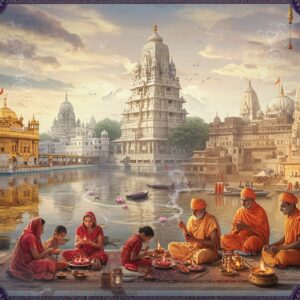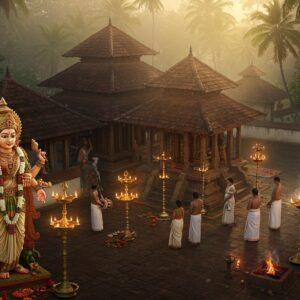
The Dwajasthambam, lovingly called Kodimaram in some parts of India, isn’t just a flagpole; it’s the very heart of a Hindu temple, especially in South India and Sri Lanka. Positioned reverently between the majestic Gopuram (temple tower) and the bustling Maha Mandapa (main hall), it often stands alongside the Balipeetam (sacrificial altar) and the Vahana (vehicle) of the temple’s deity. This sacred pillar plays a vital role in our rituals and beliefs, bridging the gap between the human and the divine.
Significance and Symbolism: More Than Just a Pole
The Dwajasthambam holds deep meaning for us. It’s not merely a structure but a powerful symbol, imbued with spiritual significance.
- A Reservoir of Divine Power: Like the Moola Virat (main idol) and Utsava Vigrahas (festival idols), the Dwajasthambam is believed to be a focal point of divine energy, radiating blessings to all who come near.
- An Invitation to the Gods: During temple festivals (Utsavas), the Dwajarohanam (flag hoisting ceremony) on the Dwajasthambam is a joyous occasion. It’s an invitation to the celestial deities, a way of saying, “Come, bless us with your presence!” The flag often depicts the Vahana of the deity – Nandi for Shiva, Mayura for Murugan, Mooshika for Ganesha, Garuda for Vishnu – along with other sacred symbols like the sun, moon, trident, or conch.
- A Spiritual Bridge: Imagine a line connecting heaven and earth. That’s the Dwajasthambam, a spiritual link between us and the Supreme Being. It symbolizes our yearning for higher understanding, our journey to overcome ignorance and reach enlightenment.
- A Symbol of Divine Sovereignty: The flag fluttering atop the Dwajasthambam isn’t just cloth and color. It represents the reign of God, a constant reminder of the divine presence in our world. It’s a symbol of faith, strength, and protection.
- The Heart of Temple Festivals: No Utsavam is complete without the Dwajasthambam. It’s integral to our festivities, a vital element that connects us to the divine during these special times.
- A Sacred Ritual: Before entering the main sanctum, many devotees offer prayers to the Dwajasthambam. It’s also customary to prostrate before it both before entering and after leaving the shrine, a gesture of deep respect and reverence.
- A Reflection of Ourselves: Some Agamas compare the Dwajasthambam to the human spinal cord, noting that its 32 rings resemble the 32 spiral bones within us. It’s a beautiful reminder of the connection between the physical and the spiritual.
- The Trimurti Embodied: The Dwajasthambam is often divided into three sections, representing the holy trinity of Brahma, Vishnu, and Shiva. The three horizontal perches (Mekhala or Mekalai) at the top also symbolize righteousness, reputation, and propriety – or the Trimurtis themselves.
Structure and Construction: Built with Devotion
The Dwajasthambam’s construction is a testament to our devotion. Typically a tall, pillar-like structure, it can be made of stone, granite, or metal, sometimes beautifully adorned with brass, copper, or even gold.
- Variations in Design: Many Dwajasthambams have three horizontal perches (Mekhala) near the top, pointing towards the Garbhagriha (sanctum sanctorum). These perches might have small bells that chime sweetly in the wind. Some, however, may have just one perch, or even none at all, perhaps ending with a platform for a deepam (lamp).
- Regional Influences: The design and materials used can differ based on the temple’s location, the deity worshipped, and the Agama Sastras followed. In Shiva temples, you might see a Trishul (trident) or Nandi statue atop the Dwajasthambam, while Vishnu temples might feature a Sudarshana Chakra or a Hanuman statue.
Looking for authentic puja items? Visit poojn.in, India’s leading online store for all your spiritual needs. We offer a wide selection of high-quality products, perfect for your home or temple. You’ll find everything from traditional flags and sacred threads to incense, lamps, and more.
Dwajasthambam at Home: Bringing the Sacred to Your Space
Many devotees wish to recreate the sacred atmosphere of a temple within their homes. A miniature Dwajasthambam can be a beautiful and meaningful addition to your puja room. It serves as a focal point for meditation and prayer, a reminder of the divine presence in your everyday life.
Find exquisite miniature Dwajasthambams at poojn.in. We offer a variety of sizes and materials, crafted with care and reverence.
Exploring More: Deepen Your Understanding
Want to learn more about Hindu temple architecture and symbolism? Check out our blog posts on Hindu Temple Architecture and Hindu Temples Explained. For those interested in visiting spiritual sites in Maharashtra, read our article on Maharashtra’s Spiritual Heart.
Conclusion: A Timeless Symbol of Faith
The Dwajasthambam is more than just a structure; it’s a living symbol of our faith, a connection to the divine, and a reminder of our spiritual journey. It stands tall and proud, inviting us to reach for higher understanding and connect with the sacred within ourselves and the world around us. For all your puja needs and sacred items, trust poojn.in to provide authentic, high-quality products delivered right to your doorstep.


